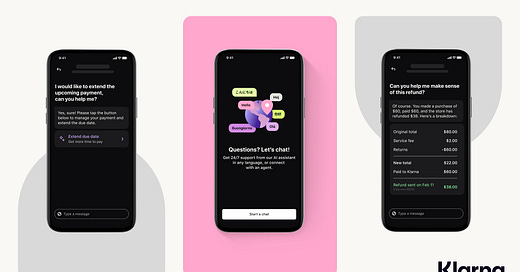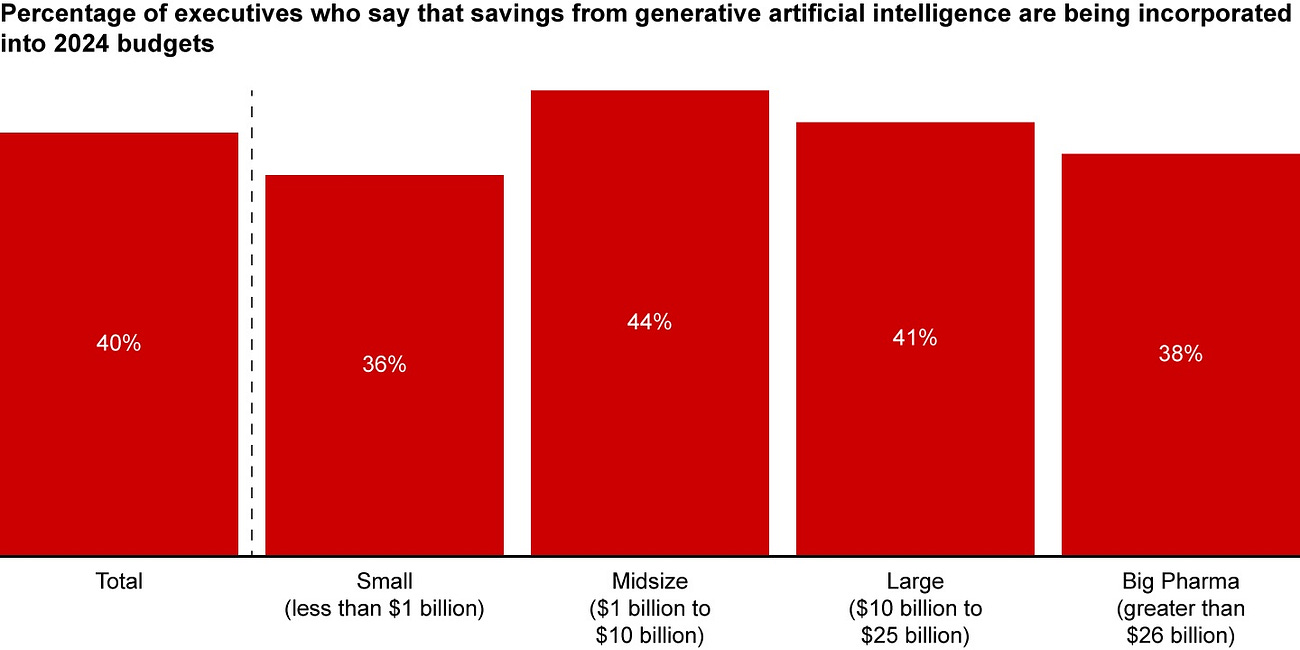Klarna Says the Quiet Part Out Loud - Generative AI Can Replace a Lot of Contact Center Staff
Klarna has announced substantial benefits from deploying generative AI for customer support. The AI Assistant is powered by OpenAI large language models (LLM). Klarna said it had handled two-thirds of its customer service chats since and is “capable of managing a range of tasks from multilingual customer service to managing refunds and returns and fostering healthy financial habits.” This totaled over 2.3 million messages, though the company did not indicate over what period of time.
It is doing the equivalent work of 700 full-time agents
It is on par with human agents in regard to customer satisfaction score
It is more accurate in errand resolution, leading to a 25% drop in repeat inquiries
Customers now resolve their errands in less than 2 mins compared to 11 mins previously
It’s available in 23 markets, 24/7 and communicates in more than 35 languages
It’s estimated to drive a $40 million USD in profit improvement to Klarna in 2024
The benefits hit all of the top benefits that companies want to extract from their contact centers. Issue resolution in 2 minutes versus 11 is an over 80% reduction in average handle time. The 25% drop in repeat inquiries ties direction to first-time resolution objectives. However, it is the work displacement of 700 full-time contact center agents and $40 million in savings that is driving a lot of attention
Generative AI and Savings
Scott Galloway recently released a podcast suggesting that generative AI is Ozempic for large companies. Ozempic is a weight loss drug in high demand.
Generative AI is the tool that is enabling so many companies to take deep cuts to headcount without undermining their revenue base, says Galloway. I think he is largely correct, except he posits that the companies are already capturing the savings from generative AI that are enabling the cuts.
However, most of the companies making cuts today do not have the $40 million savings comparable to Klarna…yet. They are anticipating their corporate Ozempic prescription will arrive soon and that it will mean less labor is required to maintain and grow the business.
This is not a narrative that many generative AI companies actively promote. It is also not the message that most corporate CEOs have attached to their workforce reduction initiatives. But the facts are there. Business executives are desperately seeking productivity gains. Generative AI is a path to productivity for some use cases. Higher productivity means you need fewer people for any given workload. That leads directly to job displacement.
A recent Bain study in September 2023 found that 40% of pharma industry executives were already identifying budget reductions in 2024. These efforts obviously emerged before the companies had started taking their savings.
Customer Support Revolution
Another interesting angle to this news is OpenAI’s active involvement in the promotion. OpenAI has not exactly embraced the job reductions narrative, though company CEO Sam Altman has spoken about these issues. Klarna had an incentive to debut the technology and talk about its cost savings. Analysts like that type of talk.
Customer support is a very large cost center for many enterprises. NLP-based support bots have led to cost savings, but they have reached a benefit frontier. LLMs reflect a new curve of innovation. You should expect to see more stories like this after the mad dash by customer support executives to find value.
There will be job cuts. However, few high-profile companies want to shine a light on his topic.
Bain Study Says 40% of Pharma Companies Factoring in Generative AI Savings in 2024
A new phenomenon emerged during the 2023 enterprise budgeting season this past fall. In industry after industry, financial managers began asking business leaders to prospectively factor in budget savings from AI initiatives. While these benefits were sought across AI-based use cases, generative AI was a significant focus. Some of those savings were expe…
Mistral Introduces Two New High Performance LLMs and Neither Are Open-Source
There is a lot to unpack in the new AI foundation models Mistral Large and Mistral Small. While Mistral’s earlier models debuted with open-source licenses, the new releases are…








